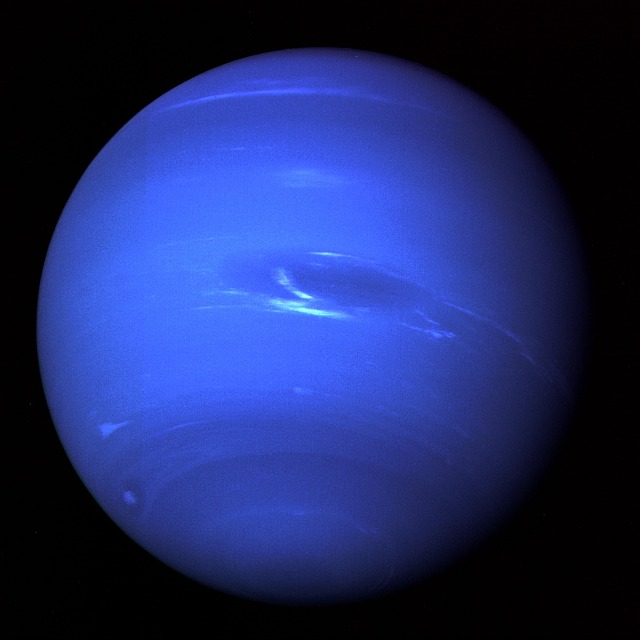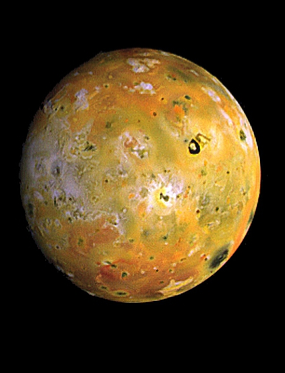*This post may contain affiliate links. This means we may make a commission if you purchase an item using one of our links*
The main differences between Neptune and Io is Neptune is the densest ice based gas giant in our solar system, is the 4th biggest planet and has the fastest winds in the entire solar system whilst Io is rock a based natural satellite that is the most volcanically active entity in the solar system and the 4th biggest natural satellite here also.
There are numerous other differences between the two so continue reading for a more detailed look at both entities along with their similarities and differences below.
What Is The Planet Neptune?
Table of Contents

Neptune is the 8th farthest planet from the Sun and ranks among the bigger planets in our solar system. As the 8th farthest planet from the Sun, it does take Neptune a very long time to complete 1 orbital around the Sun.
This takes 165 years to complete which in comparison to the 16 hour 1 full spin around the axis is a massive difference.
In regards to its composition, Neptune is mostly made up of a thick swath of water closer to the center, methane, ammonia, hydrogen and helium molded around its Earth sized core.
As a result of the excess amount of methane and the inclusion of another undiscovered element within the atmosphere, Neptune’s color is a far deeper blue than the likes Uranus, which also has an abundantly methane based atmosphere.
The planet is 49,244km in diameter, making it roughly 4 times Earth’s diameter Earth, and would allow around 57 Earths to fit inside it. This also makes Neptune the 4th largest planet in our solar system.
Neptune is very cold mostly down to its distance from the Sun, where its atmospheric temperature sits between-220 to -230 degrees Celsius. Its core is far hotter coming in at 5,100 degrees Celsius and is the very likely cause for the liquid water present within the planet
Subsequently, the erratic temperature and gaseous composition of Neptune, is what constitute towards its turbulent behavior.
In fact Neptune has the fasted winds in our solar system, producing some that eclipse speeds of 2,000km per hour. The fastest winds on Earth would only be a fifth of these speeds at most.
At this moment in time we have discovered 14 moons orbiting Neptune and have also observed 6 thinner rings surrounding the ice giant.
What Is The Moon Io?

The Moon Io – also known as Jupiter I – is the third largest of the Galilean moons, which has the closest orbit to Jupiter. It is the fourth-largest moon in our solar system by size – with a diameter of 3,643km – but has the highest density of all moons in the Milky Way.
In addition, Io has the strongest surface gravity of all moons and the least water by atomic ratio compared to any other astronomical object in our solar system.
Perhaps the most interesting feature of this lunar body is the 400 active volcanoes on its surface, which make it the most volcanically active object in the Milky Way; some of these volcanoes can exude plumes of sulfur to a height of several hundred miles.
The reason for this intense activity is the tidal heating caused by friction in the moon’s interior. Thanks to Io’s proximity to Jupiter, it finds itself caught between the gravity of its planet plus the two nearby moons – Ganymede and Europa. And this creates extreme tidal forces.
A side effect of these tidal forces is heat, which keeps most of Io’s crust in liquid form. Because of this, the surface of Io experiences a constant state of renewal; sites once home to large craters are slowly filled with molten lava and liquid rock.
While the complete makeup of Io’s surface is not yet defined, theories suggest that its main component could be sulfur and sulfur compounds because of the varied coloring. Silicate rock could also be a likely component as it would account for the high temperatures.
Io orbits Jupiter from a distance of around 422,000km, with an orbit that takes 42.5 hours to complete. Sitting 778,000,000km from the Sun, the surface temperature of this planet sits around -130 degrees Celsius. But due to the intense volcanic activity, the lava flows can reach temperatures of 1649 degrees Celsius, which is far hotter than anything on Earth.
Similarities Between Neptune And Io
Neptune and Io do share a few similar features, which in this case includes the following:
- Both are a spherical shape.
- Both have a hotter core.
- Both are part of the same solar system.
- Neither have tectonic plates.
- Both orbit another object.
Differences Between Neptune And Io
As for the differences between the two, they include the below:
- Neptune is bigger with a diameter of 49,244km compared to Io’s diameter of 3,643km.
- Neptune has a magnetosphere whilst Io does not.
- Neptune has 14 moons orbiting it whilst Io has 0 objects orbiting it.
- Io orbits Jupiter in an elliptical pattern whilst Neptune orbits the Sun in a less drastic elliptical pattern.
- Io is tidally locked to Jupiter whilst Neptune isn’t tidally locked to any other object.
- Neptune has an atmosphere composed of hydrogen, helium and methane whilst Io has a very thin sulfur dioxide based exosphere.
- Io is the most volcanically active natural satellite and entity as a whole in the solar system.
- A day on Io takes 42 hours whilst Neptune completes a day in 16 hours.
- Io’s density is 3.53 g/cm³ whilst Neptune is the most dense gas giant with a density of 1.64 g/cm³.
- In regards to axial tilt, Neptune has a tilt of 28 degrees whilst Io is practically 0 degrees.
- Neptune has an average temperature of -220 to -230 degrees Celsius whilst Io’s average temperature is -130 degrees Celsius.
- As for mass, Io’s is 8.93 × 10^22 kg whilst Neptune’s mass is 1.024 × 10^26 kg.
- Neptune is an ice based gas giant whilst Io is a terrestrial entity.
- Neptune has 6 rings whilst Io has 0.
- Neptune has a gravitational strength of 11.15 m/s² whilst Io’s is 1.796 m/s².
- Neptune orbits the Sun in 167 years whilst Io orbits it in 12 years.
- Neptune has the strongest winds our solar system achieving speeds of 2,000km/h
Summary
Although Neptune and Io are both found within the same solar system and don’t have tectonic activity, the manner in which they function and operate within their local regions are very different.
Whether it be in regards to mass, size, their atmospheres, wind speed, physical composition, volcanic activity and more, Neptune and Io are simply polar opposites of one another and in turn are easily distinguishable in the grand scheme of things.

